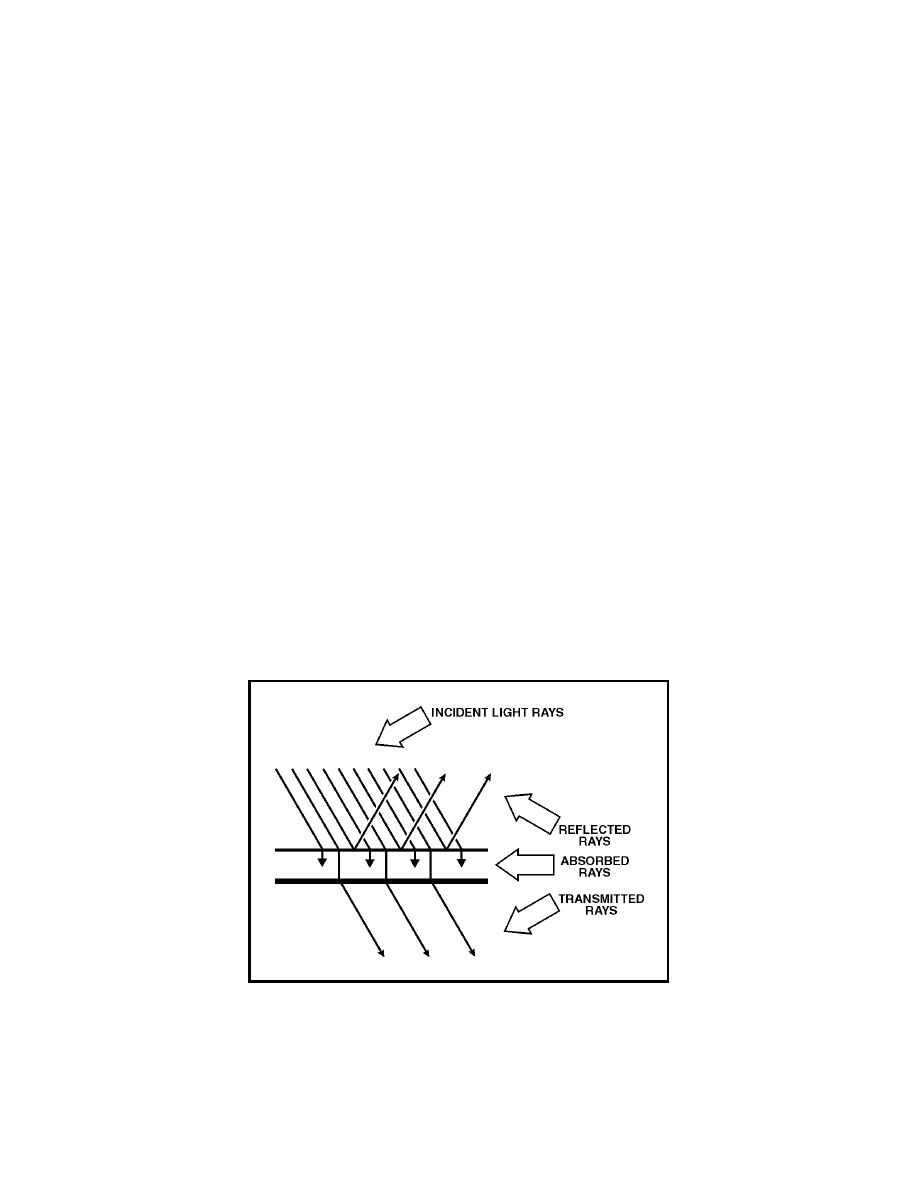
________________________________________________________________Wave Propagation
1-94. Certain bodies, such as the sun, a gas flame, and an electric light
filament are visible because they are light sources. They are called self-
luminous bodies. Objects other than self-luminous bodies become visible only
when they are in the presence of light from luminous bodies.
1-95. Most nonluminous bodies are visible because they diffuse or reflect the
light that falls on them. A good example of a nonluminous diffusing body is
the moon, which shines only because the sunlight falling onto its surface is
diffused.
1-96. Black objects do not diffuse or reflect light. They are visible only when
outlined against a background of light from a luminous or diffusing body.
1-97. When light waves, which travel in straight lines, encounter any
substance, they are transmitted, reflected, or absorbed. These effects are
illustrated in figure 1-19. When light strikes a substance, some absorption
and some reflection always take place. No substance completely transmits,
reflects, or absorbs all of the light rays that reach its surface. Substances that
transmit almost all the light waves that fall upon them are said to be
transparent. A transparent substance is one through which you can see
clearly. Clear glass is transparent because it transmits light rays without
diffusing them (figure 1-20, view A). There is no known perfectly transparent
substance, but many substances are nearly so. Substances through which
some light rays can pass but through which objects cannot be seen clearly
because the rays are diffused are called translucent (figure 1-20, view B). The
frosted glass of a light bulb and a piece of oiled paper are examples of
translucent materials. Substances that do not transmit any light rays are
called opaque (figure 1-20, view C). Opaque substances can either reflect or
absorb virtually all of the light rays that fall upon them.
Figure 1-19. Light Waves Reflected, Absorbed, and Transmitted
1-27



 Previous Page
Previous Page
